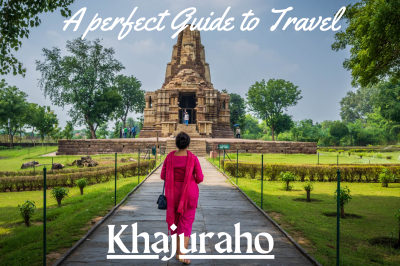Upgrade & Secure Your Future with DevOps, SRE, DevSecOps, MLOps!
We spend hours scrolling social media and waste money on things we forget, but won’t spend 30 minutes a day earning certifications that can change our lives.
Master in DevOps, SRE, DevSecOps & MLOps by DevOps School!
Learn from Guru Rajesh Kumar and double your salary in just one year.
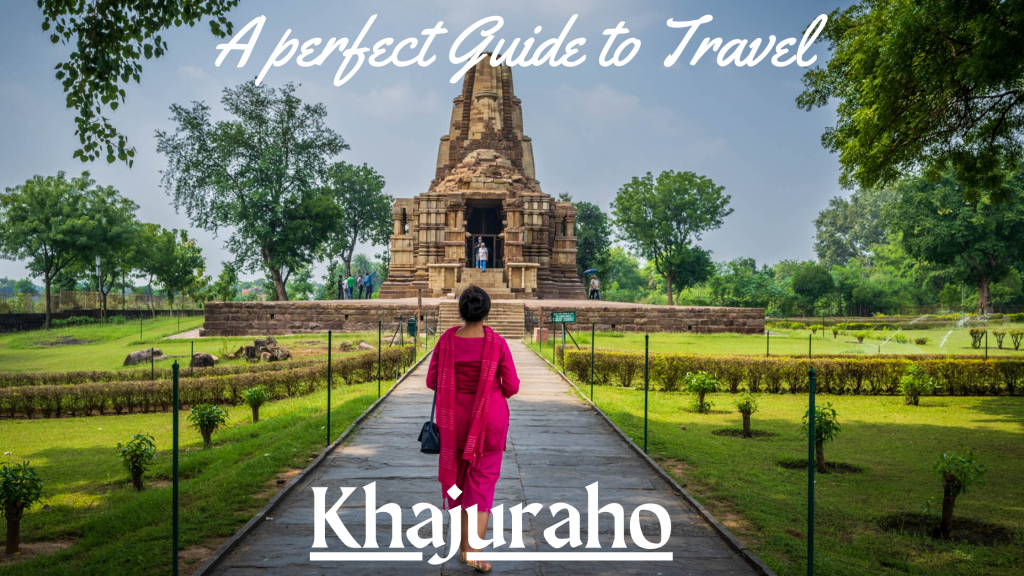
Introduction
Brief History and Significance of Khajuraho
Khajuraho, a small town in the Chhatarpur district of Madhya Pradesh, India, is world-renowned for its stunning temples and exquisite architectural brilliance. The history of Khajuraho dates back to the medieval period between 950 and 1050 AD, during the reign of the Chandela dynasty. The Chandelas, known for their patronage of art and architecture, commissioned the construction of over 85 temples across Khajuraho, making it a significant cultural and religious hub of that era.
The temples of Khajuraho were primarily built in dedication to Hindu deities such as Shiva, Vishnu, and Jain Tirthankaras, reflecting the religious pluralism of the time. These temples were later abandoned in the 13th century as the Chandela dynasty declined and the region fell under different rulers. The temples remained hidden in dense forestation until their rediscovery in the 19th century by British surveyors.
Overview of What Khajuraho is Famous For
Khajuraho is globally acclaimed for its magnificent group of temples, which are celebrated for their intricate carvings and architectural grandeur. These temples are primarily known for their:
- Architectural Splendor: The temples of Khajuraho are exemplary models of the Nagara-style architecture, characterized by their tall spires (shikharas) and intricate sandstone carvings. Each temple is a masterpiece showcasing the skills and craftsmanship of the artisans of that period.
- Erotic Sculptures: One of the most distinctive features of the Khajuraho temples is the explicit erotic sculptures that adorn their exteriors. These carvings, often misunderstood, are believed to symbolize the tantric practices and the celebration of life, love, and spirituality.
- UNESCO World Heritage Status: In 1986, the Khajuraho Group of Monuments was inscribed as a UNESCO World Heritage Site. This recognition underscores the universal cultural significance of these temples and their unparalleled artistic value.
- Cultural and Historical Importance: The temples are not just architectural wonders but also significant historical landmarks that offer insight into the socio-cultural dynamics, religious practices, and artistic expressions of the Chandela period.
How to Reach Khajuraho
How to Reach Khajuraho
| Mode of Transport | Details |
|---|---|
| By Air | Nearest Airport: Khajuraho Airport (HJR) Major Airlines: Air India, SpiceJet Flight Frequency: Few flights per week, more frequent during peak season (October to March) |
| By Train | Nearest Railway Station: Khajuraho Railway Station (5 km from town center) Major Train Routes: – From Delhi: Uttar Pradesh Sampark Kranti Express – From Varanasi: Bundelkhand Link Express – From Jhansi: Multiple trains available Tips for Train Travel: – Book tickets in advance, especially during peak season – Opt for AC classes for comfort – Local transport (auto-rickshaws, taxis) available at the station |
| By Road | Major Highways: – NH 39: Connects Khajuraho to Jhansi and Satna – NH 75: Connects Khajuraho to Chhatarpur Bus Services: State-run and private buses connect Khajuraho to nearby cities like Jhansi, Satna, and Chhatarpur Car Rentals: Self-drive and chauffeur-driven options available in major cities Travel Time from Major Cities: – Delhi to Khajuraho: ~600 km, 10-12 hours – Jhansi to Khajuraho: ~175 km, 4-5 hours – Varanasi to Khajuraho: ~400 km, 8-9 hours |
Best Time to Visit Khajuraho
| Criteria | Details |
|---|---|
| Peak Tourist Seasons | October to March: This is the most popular time to visit Khajuraho due to the pleasant weather, making it ideal for sightseeing and outdoor activities. |
| Weather Conditions Throughout the Year | Summer (April to June): Hot and dry with temperatures ranging from 30°C to 45°C (86°F to 113°F). Not ideal for travel due to the extreme heat. Monsoon (July to September): Moderate to heavy rainfall with temperatures ranging from 25°C to 35°C (77°F to 95°F). The landscape becomes lush, but travel can be hindered by rain. Winter (October to March): Pleasant and cool with temperatures ranging from 5°C to 25°C (41°F to 77°F). Ideal for travel, sightseeing, and attending festivals. |
| Festivals and Events | Khajuraho Dance Festival (February/March): A week-long celebration of classical Indian dance forms held in the backdrop of the temples. It attracts performers and audiences from all over the world. Makar Sankranti (January): Celebrated with kite flying and traditional rituals. Diwali (October/November): The festival of lights is celebrated with much enthusiasm, illuminating the temples and streets. |
Top Attractions in Khajuraho
Major Temples
- Kandariya Mahadev Temple
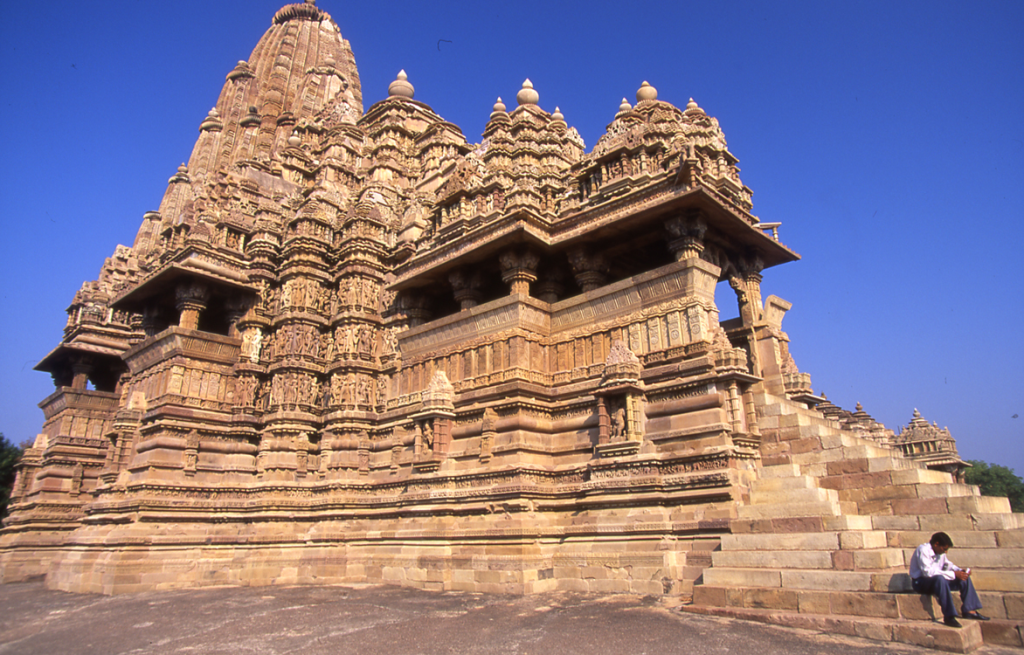
The Kandariya Mahadev Temple is the largest and most ornate temple in Khajuraho. Dedicated to Lord Shiva, it is renowned for its intricate carvings and grand spire, which rises to a height of 31 meters. The temple’s exterior is adorned with over 800 statues depicting various aspects of life, including divine beings, celestial nymphs, and mythical creatures. The sanctum houses a Shiva Lingam, symbolizing the deity’s presence.
2. Lakshmana Temple

The Lakshmana Temple is one of the oldest and best-preserved temples in Khajuraho, dedicated to Lord Vishnu. Built in 954 AD, it showcases the early architectural style of the Chandela dynasty. The temple features a central sanctum, a pillared hall (mandapa), and an entrance porch. Its exterior walls are richly decorated with sculptures of gods, goddesses, and mythical creatures, as well as scenes from daily life.
3. Vishwanath Temple
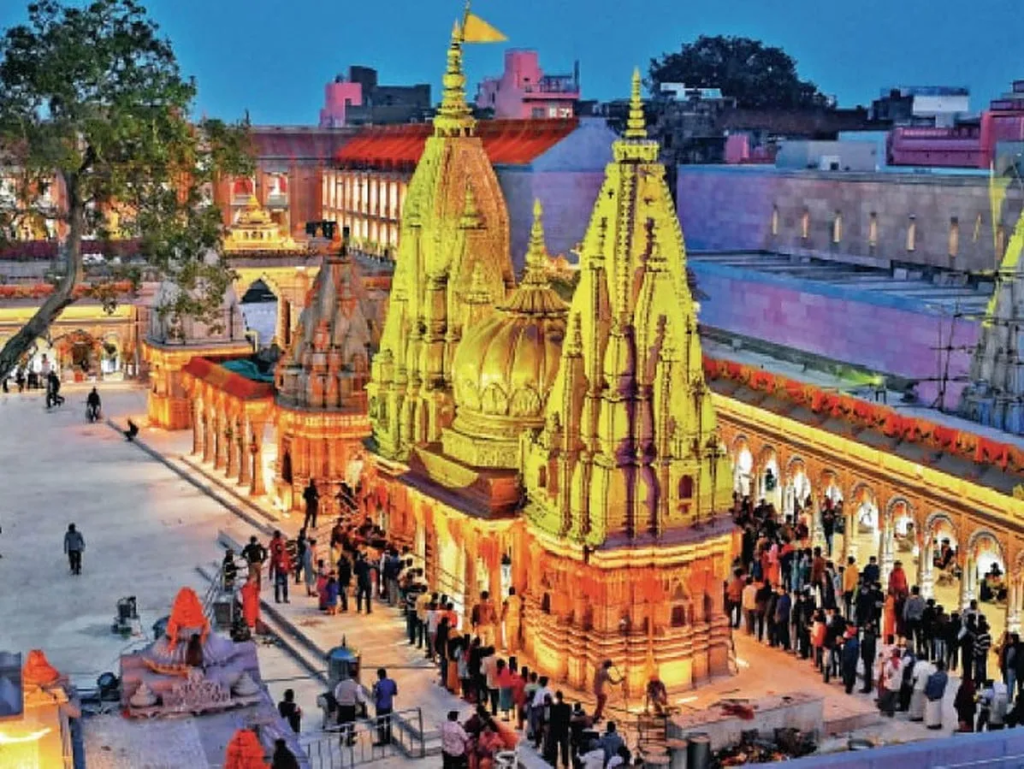
Dedicated to Lord Shiva, the Vishwanath Temple is known for its exquisite carvings and beautiful architecture. The temple features a large Nandi bull statue in front of the entrance and intricate carvings on the outer walls, depicting celestial beings, musicians, and dancers.
4. Chitragupta Temple

This temple is dedicated to the Sun God, Surya, and is unique in its representation of the deity riding a chariot driven by seven horses. The temple’s walls are adorned with scenes from daily life, as well as celestial and erotic sculptures.
Other Important Sites
- Jain Temples

The Jain temples in Khajuraho are located in the eastern group and are dedicated to Jain Tirthankaras. The Parsvanath Temple, the largest Jain temple in Khajuraho, is known for its detailed carvings and serene atmosphere. The Adinath Temple, dedicated to the first Tirthankara, features beautiful sculptures and a refined architectural style.
2. Chausath Yogini Temple
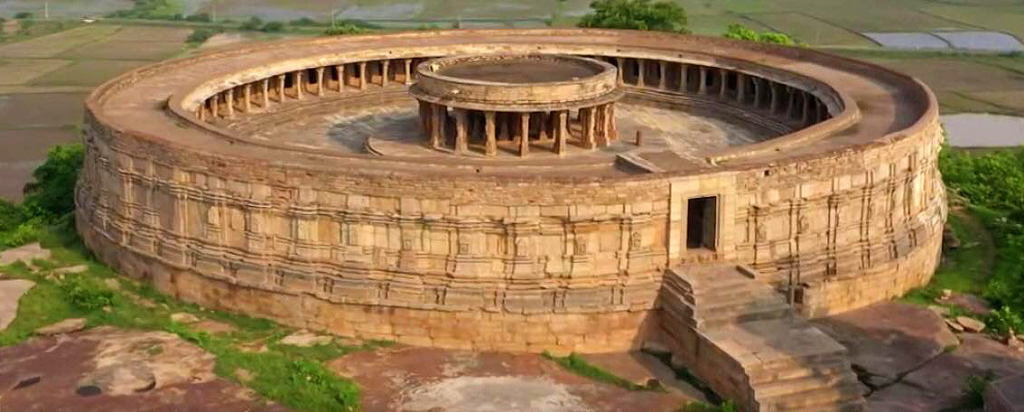
The Chausath Yogini Temple is one of the oldest temples in Khajuraho, dating back to the 9th century. It is dedicated to the 64 Yoginis, female attendants of the Goddess Kali. The temple is unique in its circular design and offers a panoramic view of the surrounding landscape.
Museums and Cultural Centers
- Archaeological Museum
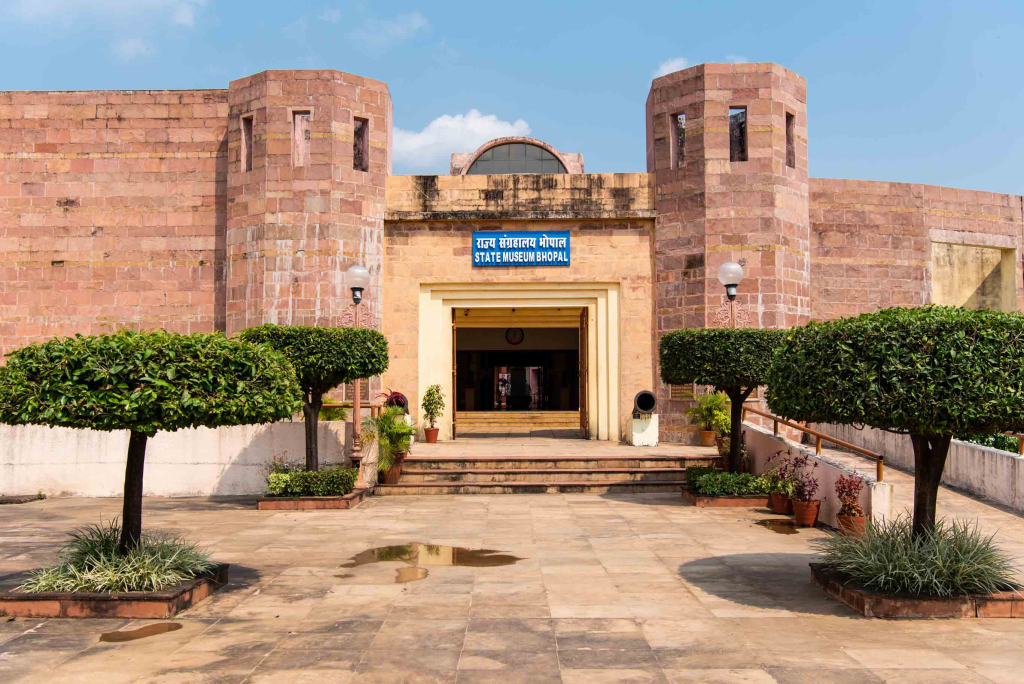
The Archaeological Museum in Khajuraho houses a collection of artifacts and sculptures from the temples, providing insight into the region’s rich cultural and artistic heritage. The museum’s exhibits include statues of deities, inscriptions, and other relics from the Chandela period.
2. Adivart Tribal and Folk Art Museum
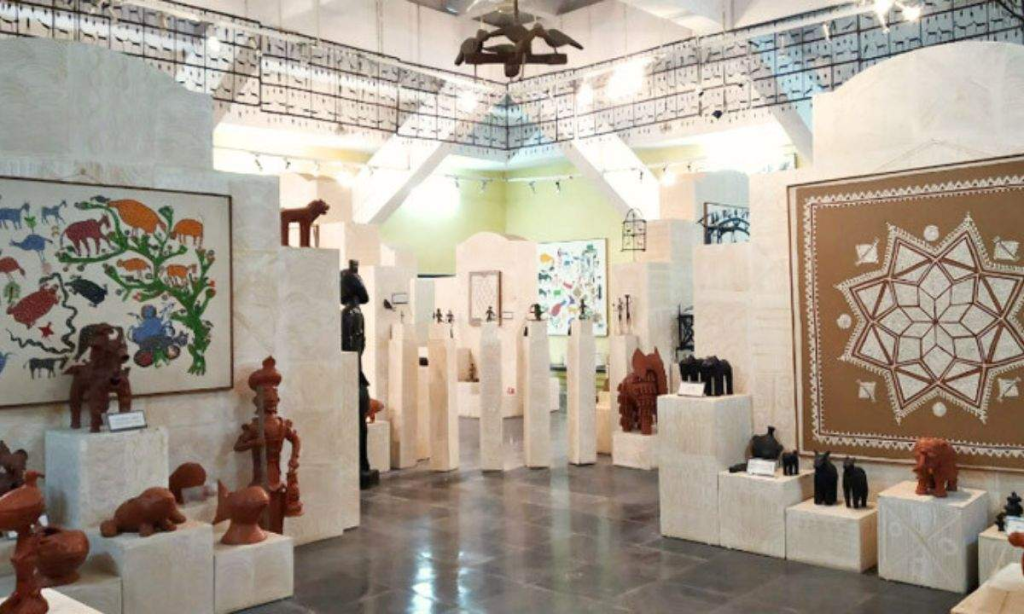
This museum showcases the traditional art and culture of the indigenous tribes of Madhya Pradesh. It features a variety of exhibits, including tribal artifacts, folk paintings, and handcrafted items, highlighting the diversity and richness of tribal traditions.
Exploring these top attractions in Khajuraho will give you a comprehensive understanding of the town’s historical, cultural, and architectural significance.
Things to Do in Khajuraho
Guided Tours and Temple Visits
- Guided Tours: Hiring a local guide can enhance your experience of Khajuraho’s temples, providing in-depth knowledge about the history, architecture, and significance of each site. Several agencies offer guided tours, including group tours and private tours.
- Temple Visits: Explore the major temples at your own pace. Spend time admiring the intricate carvings and taking photographs. Don’t miss the Western Group of Temples, which includes the Kandariya Mahadev Temple, Lakshmana Temple, and Vishwanath Temple, as well as the Eastern and Southern groups of temples.
Light and Sound Show
- Description: The Light and Sound Show at the Western Group of Temples is a must-see. It narrates the history of Khajuraho and the Chandela dynasty, set against the beautifully illuminated backdrop of the temples. The show is available in both English and Hindi, offering a mesmerizing blend of light effects, music, and storytelling.
- Timings: The show typically takes place in the evening, with separate timings for the English and Hindi versions. Check local schedules for exact times and ticket prices.
Cultural Performances and Dances
- Khajuraho Dance Festival: Held annually in February or March, this week-long festival showcases classical Indian dance forms such as Kathak, Bharatanatyam, Odissi, and Kuchipudi. The performances take place against the stunning backdrop of the temples, creating a magical ambiance.
- Other Cultural Performances: Throughout the year, various cultural events and performances are organized in Khajuraho. These may include folk dances, music concerts, and theatrical performances, offering visitors a glimpse into the rich cultural heritage of the region.
Nearby Attractions and Day Trips
- Panna National Park: Located about 45 kilometers from Khajuraho, Panna National Park is a popular destination for wildlife enthusiasts. The park is home to a variety of wildlife, including tigers, leopards, deer, and numerous bird species. Enjoy a safari tour to explore the park’s diverse flora and fauna.
- Raneh Falls: Approximately 20 kilometers from Khajuraho, Raneh Falls is a stunning natural attraction featuring a series of waterfalls and rock formations. The falls are located on the Ken River and are surrounded by lush greenery, making it a perfect spot for nature lovers and photographers.
- Ken Gharial Sanctuary: Situated near the confluence of the Ken and Khudar rivers, this sanctuary is dedicated to the conservation of the gharial, a critically endangered crocodile species. The sanctuary also offers opportunities to see other wildlife and bird species.
- Ajaygarh Fort: About 80 kilometers from Khajuraho, Ajaygarh Fort is a historical site perched atop a hill. The fort offers panoramic views of the surrounding landscape and is an excellent spot for history buffs and adventure seekers.
Accommodation in Khajuraho
| Category | Hotel/Resort/Guesthouse | Description |
|---|---|---|
| Budget Options | Zostel Khajuraho | Popular among backpackers, offers dormitory and private rooms with basic amenities and a social atmosphere. |
| Hotel Isabel Palace | Clean and comfortable rooms with free Wi-Fi, on-site restaurant, close to the Western Group of Temples. | |
| Hotel Surya | Budget-friendly with simple rooms, rooftop restaurant, and helpful staff. | |
| Mid-Range Options | Ramada Khajuraho | Well-appointed rooms, swimming pool, fitness center, multiple dining options, close to temples and airport. |
| Clarks Khajuraho | Spacious rooms, swimming pool, spa, landscaped gardens, several dining options. | |
| The Lalit Temple View Khajuraho | Modern amenities, swimming pool, spa, views of Western Group of Temples, cultural programs, yoga sessions. | |
| Luxury Options | Radisson Jass Hotel Khajuraho | Elegant rooms, swimming pool, spa, multiple dining options, various recreational activities and tours. |
| The Gateway Hotel by Taj | Luxurious accommodations, swimming pool, fitness center, spa, excellent dining options, impeccable service. | |
| Syna Heritage Hotel | Blend of traditional architecture and modern comforts, luxurious rooms, swimming pool, spa, fine dining. | |
| Unique Stays | The Lalit Temple View Khajuraho | Combines modern amenities with traditional decor, stunning views of Western Group of Temples, cultural performances, yoga sessions. |
| Syna Heritage Hotel | Heritage property with traditional architectural elements, ornate interiors, personalized service, garden, swimming pool, spa. |
Food and Dining in Khajuraho
| Category | Description |
|---|---|
| Local Cuisine and Must-Try Dishes | Bhutte ki Kees: Grated corn cooked with milk, spices, and garnished with coriander. Dal Bafla: Wheat dough balls boiled and baked, served with lentil curry (dal). Rogan Josh: Flavorful lamb curry with a rich, aromatic gravy. Seekh Kebabs: Minced meat mixed with spices, shaped onto skewers, and grilled. Poha: Flattened rice cooked with turmeric, mustard seeds, onions, garnished with sev and coriander. Sweet Dishes: Jalebi: Deep-fried spirals made from wheat flour, soaked in sugar syrup. Mawa-Bati: Sweet dish made from khoya, stuffed with dry fruits, and deep-fried. Malpua: Sweet pancakes made from flour, milk, and sugar, often served with rabri. |
| Recommended Restaurants and Eateries | Raja Café: Mix of Indian and Continental dishes, garden setting, rooftop terrace. Specialty: Indian thali, pizzas, pasta. Madras Coffee House: Known for South Indian cuisine. Specialty: Masala dosa, filter coffee. Bella Italia: Italian restaurant with a range of pizzas, pastas, salads. Specialty: Margherita pizza, lasagna. Guru Kripa: Popular for North Indian cuisine. Specialty: Butter chicken, paneer tikka. La Bella Italia Restaurant: Authentic Italian dishes. Specialty: Spaghetti carbonara, tiramisu. |
| Street Food Options | Pani Puri/Golgappa: Crispy puris filled with spicy tamarind water, potatoes, chickpeas. Chaat: Savory snack with potatoes, chickpeas, yogurt, tamarind chutney, sev. Varieties include aloo tikki chaat, papdi chaat. Samosas: Deep-fried pastry filled with spiced potatoes and peas. Kachori: Spicy deep-fried snack filled with lentils or onions. Jalebi: Sweet treat made from deep-fried spirals of batter soaked in sugar syrup. |
Travel Tips for Khajuraho
| Category | Details |
|---|---|
| What to Pack | – Clothing: Lightweight and breathable clothing for the day, warmer layers for cooler evenings, and a hat or cap for sun protection. – Footwear: Comfortable walking shoes for exploring the temples and attractions. – Sunscreen and Sunglasses: To protect against the sun. – Medications: Any personal medications, basic first aid kit, and over-the-counter medicines for common ailments. – Reusable Water Bottle: To stay hydrated, especially during the hot months. – Camera: To capture the beautiful architecture and landscapes. – Travel Guidebook and Map: Handy for navigating the area and learning more about the attractions. |
| Health and Safety Tips | – Stay Hydrated: Drink plenty of water to avoid dehydration, especially during the hot months. – Eat Wisely: Prefer bottled water and eat at reputable restaurants to avoid foodborne illnesses. – Vaccinations: Check with your doctor about necessary vaccinations before traveling. – Local Emergency Numbers: Keep a list of local emergency contact numbers, including police, hospital, and your country’s embassy or consulate. – Respect Wildlife: If visiting nearby natural attractions, maintain a safe distance from wildlife. |
| Language and Communication Tips | – Basic Phrases: Learning a few basic Hindi phrases can be helpful. For example, “Namaste” (Hello), “Dhanyavaad” (Thank you), and “Kripya” (Please). – English: Many people in Khajuraho, especially those involved in tourism, speak English. – Translation Apps: Consider using translation apps on your smartphone to assist with communication. |
| Cultural Etiquette | – Dress Modestly: While visiting temples and religious sites, dress conservatively. Cover your shoulders and knees. – Temple Etiquette: Remove your shoes before entering a temple and respect the local customs and rituals. – Photography: Always ask for permission before taking photographs of people, especially in rural areas. – Respect Local Customs: Be mindful of local customs and traditions, and behave respectfully. – Bargaining: Bargaining is common in local markets, but always do so politely. |
Shopping in Khajuraho
| Category | Details |
|---|---|
| Local Markets and What to Buy | Stone Carvings: Replicas of the intricate carvings found on the Khajuraho temples. Unique and authentic souvenirs. Textiles: Traditional Madhya Pradesh textiles such as Chanderi and Maheshwari sarees. Jewelry: Handmade silver and tribal jewelry reflecting local craftsmanship. Brassware and Metal Crafts: Decorative items including statues and traditional utensils. Paintings: Folk and tribal art like Pithora paintings and Gond art. Local Spices: A variety of spices from Madhya Pradesh. |
| Recommended Markets and Shops | Khajuraho Local Market: Bustling market with a variety of handicrafts, textiles, and souvenirs. Rajinagar Market: Known for local crafts and jewelry. Gole Market: Offers a range of items from clothing to handicrafts. Mrignayani Emporium: Government-run store with authentic handicrafts and textiles at fixed prices. |
| Tips for Bargaining and Shopping | Bargaining Tips: – Start Low: Begin with a lower price than what you are willing to pay. – Stay Polite: Be polite and respectful during bargaining. – Know the Market: Browse different stalls to understand the general price range. – Walk Away: Be prepared to walk away if the price doesn’t meet your expectations. – Fixed-Price Shops: Look for fixed-price shops like Mrignayani Emporium for assured quality. Shopping Tips: – Quality Check: Inspect items carefully for quality. – Local Recommendations: Ask locals or hotel staff for shopping recommendations. – Cash and Change: Carry enough cash, especially smaller denominations. – Cultural Sensitivity: Respect local customs and traditions while shopping. |
Transportation within Khajuraho
Local Transportation Options
| Mode of Transport | Description |
|---|---|
| Auto-Rickshaws | – Availability: Auto-rickshaws are widely available and are a convenient mode of transportation for short distances. – Fares: Fares are usually negotiable. It’s best to agree on a price before starting the journey. |
| Taxis | – Availability: Taxis can be hired for both short trips and full-day excursions. – Booking: They can be booked through hotels, taxi stands, or ride-hailing apps where available. – Comfort: Taxis provide a more comfortable and private mode of transport. |
| Bicycles | – Rentals: Bicycles are available for rent from various rental shops and hotels. – Eco-Friendly: Cycling is an eco-friendly and healthy way to explore the town and nearby attractions. – Cost: Rental costs are usually affordable. |
| Motorbikes/Scooters | – Rentals: Available for rent from local shops. – Flexibility: Offers greater flexibility and ease of travel over longer distances compared to bicycles. – Cost: Rental prices vary, so it’s advisable to compare rates. |
| Walking | – Suitability: Many of the major temples and attractions are within walking distance of each other. – Experience: Walking allows you to take in the local sights and sounds at a leisurely pace. |
Tips for Getting Around
- Negotiate Fares: Always negotiate the fare before starting your journey in an auto-rickshaw or taxi to avoid misunderstandings.
- Use Local Maps: Keep a map or navigation app handy to help you find your way around and ensure drivers take you to the correct destinations.
- Ask for Recommendations: Hotel staff and locals can provide valuable advice on the best transportation options and routes.
- Carry Small Change: It’s useful to carry small denominations of cash for paying auto-rickshaw and taxi fares.
- Stay Safe: Ensure that rented bicycles and motorbikes are in good condition and that you wear a helmet when riding a motorbike or scooter.
- Plan Your Route: If walking or cycling, plan your route in advance to cover the attractions efficiently and avoid getting lost.
- Book in Advance: For longer trips or day tours, consider booking taxis or tour services in advance, especially during the peak tourist season.
- Stay Hydrated: Whether walking, cycling, or using other forms of transportation, always carry water, especially during hot weather.
Photography Tips for Khajuraho
Best Spots and Times for Photography
| Best Spots | Description |
|---|---|
| Kandariya Mahadev Temple | Known for its intricate carvings and grand spire, this temple offers numerous opportunities for detailed and wide-angle shots. |
| Lakshmana Temple | With its well-preserved sculptures and detailed facades, this temple is ideal for capturing close-ups of architectural details. |
| Vishwanath Temple | Offers beautiful carvings and a large Nandi bull statue, perfect for both detailed and panoramic shots. |
| Chitragupta Temple | Unique for its depiction of the Sun God, this temple provides great angles for morning and evening shots. |
| Jain Temples (Parsvanath Temple) | The largest Jain temple with detailed carvings, offering excellent opportunities for capturing the nuances of Jain architecture. |
| Chausath Yogini Temple | Its unique circular design and panoramic views make it a great spot for landscape and architectural photography. |
| Best Times | Description |
|---|---|
| Early Morning | The soft, golden light during sunrise provides excellent lighting for capturing the temples and their details. Fewer tourists also mean less crowd in your shots. |
| Late Afternoon to Sunset | The warm light of the setting sun casts beautiful shadows and highlights on the temple carvings, enhancing their details. |
| Evening (Light and Sound Show) | Capturing the temples during the Light and Sound Show offers a unique perspective with dramatic lighting and storytelling elements. |
Tips for Capturing the Architecture and Details of the Temples
- Use a Wide-Angle Lens: A wide-angle lens is ideal for capturing the grandeur of the temples and their surroundings. It allows you to include more of the structure in your frame, especially useful for the larger temples.
- Focus on Details: The temples of Khajuraho are renowned for their intricate carvings. Use a macro or zoom lens to capture the fine details and close-ups of sculptures and carvings.
- Play with Light and Shadow: The carvings create interesting patterns of light and shadow throughout the day. Experiment with different angles to highlight these contrasts and add depth to your photos.
- Use a Tripod: For steady shots, especially in low light conditions such as during sunrise or sunset, use a tripod. It helps in maintaining stability and achieving sharper images.
- Experiment with Angles: Don’t just shoot from eye level. Experiment with low angles to emphasize the height of the spires or high angles to capture the layout and symmetry of the temples.
- Incorporate Human Element: Including people in your shots can add a sense of scale to the grandeur of the temples and also capture the cultural aspect of the site.
- Golden Hour Photography: Utilize the golden hour (shortly after sunrise and before sunset) for soft, warm lighting that enhances the textures and details of the temples.
- Avoid Crowds: Visit the temples early in the morning or late in the afternoon to avoid crowds and get cleaner shots without too many people.
- Mind the Background: Be aware of the background and try to eliminate distractions that might take attention away from the main subject.
- Respect the Site: While trying to get the perfect shot, ensure you respect the site and its cultural significance. Avoid climbing on the structures or disturbing other visitors.
Sample Itineraries for Khajuraho
1-Day Itinerary
| Time | Activity |
|---|---|
| 8:00 AM | Arrive in Khajuraho and check into your hotel. |
| 9:00 AM | Visit the Western Group of Temples: Kandariya Mahadev Temple, Lakshmana Temple, Vishwanath Temple. |
| 12:00 PM | Lunch at Raja Café or a local restaurant. |
| 1:30 PM | Explore the Eastern Group of Temples, including the Jain Temples (Parsvanath Temple). |
| 3:30 PM | Visit the Archaeological Museum to understand the history and artifacts. |
| 5:00 PM | Head to the Chausath Yogini Temple and enjoy the panoramic views. |
| 6:30 PM | Return to the Western Group of Temples for the Light and Sound Show. |
| 8:00 PM | Dinner at your hotel or a recommended restaurant. |
2-Day Itinerary
| Day 1 | Activity |
|---|---|
| 8:00 AM | Arrive in Khajuraho and check into your hotel. |
| 9:00 AM | Visit the Western Group of Temples: Kandariya Mahadev Temple, Lakshmana Temple, Vishwanath Temple. |
| 12:00 PM | Lunch at Raja Café or a local restaurant. |
| 1:30 PM | Explore the Eastern Group of Temples, including the Jain Temples (Parsvanath Temple). |
| 4:00 PM | Visit the Archaeological Museum. |
| 6:30 PM | Light and Sound Show at the Western Group of Temples. |
| 8:00 PM | Dinner at your hotel or a recommended restaurant. |
| Day 2 | Activity |
|---|---|
| 8:00 AM | Breakfast at your hotel. |
| 9:00 AM | Day trip to Raneh Falls and the Ken Gharial Sanctuary. |
| 12:30 PM | Picnic lunch near Raneh Falls. |
| 2:00 PM | Return to Khajuraho and visit the Chitragupta Temple. |
| 4:00 PM | Explore the Southern Group of Temples, including the Duladeo Temple. |
| 6:00 PM | Stroll around the local market for shopping and souvenirs. |
| 7:30 PM | Dinner and cultural performance at a local restaurant. |
3-Day Itinerary
| Day 1 | Activity |
|---|---|
| 8:00 AM | Arrive in Khajuraho and check into your hotel. |
| 9:00 AM | Visit the Western Group of Temples: Kandariya Mahadev Temple, Lakshmana Temple, Vishwanath Temple. |
| 12:00 PM | Lunch at Raja Café or a local restaurant. |
| 1:30 PM | Explore the Eastern Group of Temples, including the Jain Temples (Parsvanath Temple). |
| 4:00 PM | Visit the Archaeological Museum. |
| 6:30 PM | Light and Sound Show at the Western Group of Temples. |
| 8:00 PM | Dinner at your hotel or a recommended restaurant. |
| Day 2 | Activity |
|---|---|
| 8:00 AM | Breakfast at your hotel. |
| 9:00 AM | Day trip to Raneh Falls and the Ken Gharial Sanctuary. |
| 12:30 PM | Picnic lunch near Raneh Falls. |
| 2:00 PM | Return to Khajuraho and visit the Chitragupta Temple. |
| 4:00 PM | Explore the Southern Group of Temples, including the Duladeo Temple. |
| 6:00 PM | Stroll around the local market for shopping and souvenirs. |
| 7:30 PM | Dinner and cultural performance at a local restaurant. |
| Day 3 | Activity |
|---|---|
| 8:00 AM | Breakfast at your hotel. |
| 9:00 AM | Day trip to Panna National Park for a wildlife safari. |
| 12:30 PM | Lunch at a local restaurant near the park. |
| 2:00 PM | Visit the Pandav Falls and Caves. |
| 4:30 PM | Return to Khajuraho and relax at your hotel. |
| 6:00 PM | Evening walk around Khajuraho, visiting local markets and cafes. |
| 8:00 PM | Dinner at a recommended restaurant. |
Special Interest Itineraries
Photography Tour
- Day 1: Early morning photography at the Western Group of Temples, focusing on Kandariya Mahadev and Lakshmana Temples. Midday break and afternoon session at the Eastern Group of Temples.
- Day 2: Sunrise shoot at Chausath Yogini Temple, followed by a visit to Raneh Falls for landscape photography. Evening Light and Sound Show for night photography.
- Day 3: Early morning wildlife photography at Panna National Park, followed by a visit to Pandav Falls and Caves for nature photography.
Heritage Tour
- Day 1: Visit the Western Group of Temples, including a detailed guided tour of Kandariya Mahadev, Lakshmana, and Vishwanath Temples. Evening Light and Sound Show.
- Day 2: Explore the Eastern Group of Temples and Jain Temples with a focus on historical and architectural significance. Afternoon visit to the Archaeological Museum.
- Day 3: Day trip to Ajaygarh Fort and nearby historical sites, concluding with a visit to the Chausath Yogini Temple.
Additional Resources for Khajuraho
Maps and Navigation Tips
- Local Maps: Obtain a detailed map of Khajuraho from your hotel or a local tourist information center. These maps often highlight major temples, attractions, and essential services.
- Google Maps: Use Google Maps for real-time navigation and directions. It’s useful for locating specific temples, restaurants, and other points of interest.
- Offline Maps: Download offline maps on your smartphone before your trip to avoid issues with connectivity. Apps like Maps.me are useful for this purpose.
- Navigation Tips:
- Plan your route in advance, especially if walking or cycling between attractions.
- Keep a printed map handy in case of mobile network issues.
- Ask locals for directions if needed; they are often very helpful.
Important Contact Numbers
| Service | Contact Number |
|---|---|
| Tourist Information Center | +91-7686-274011 |
| Khajuraho Airport | +91-7686-272305 |
| Khajuraho Railway Station | +91-7686-272007 |
| Police (Emergency) | 100 |
| Ambulance | 102 |
| Fire Brigade | 101 |
| Local Taxi Service | Available through hotels or local operators |
| Medical Assistance | |
| – Chhatarpur District Hospital | +91-7682-241400 |
| – Jain Nursing Home | +91-7686-272090 |
| Tour Operators | |
| – MP Tourism | +91-11-42897800 |
| – Private Tour Guides | Available through hotels or booking agencies |
Websites and Apps for Travel Planning
| Platform | Description |
|---|---|
| Official MP Tourism Website | MP Tourism – Offers detailed information about Khajuraho, including attractions, accommodations, and travel tips. |
| TripAdvisor | TripAdvisor – Reviews and recommendations for hotels, restaurants, and attractions in Khajuraho. |
| Booking.com | Booking.com – Accommodation booking platform with user reviews and ratings. |
| Airbnb | Airbnb – Options for unique stays and local experiences. |
| Google Maps | Google Maps – Real-time navigation, directions, and location information. |
| Rome2Rio | Rome2Rio – Helps you plan your journey to Khajuraho by showing various travel options and routes. |
| Uber/Ola | Ride-hailing apps for local transportation. Available for download on Android and iOS. |
| Zomato | Zomato – Restaurant reviews, menus, and ratings to help you choose dining options. |
| XE Currency Converter | XE Currency – For up-to-date currency exchange rates. |
| Weather Apps | Apps like Weather.com or AccuWeather for real-time weather updates and forecasts. |
Using these resources will help you navigate Khajuraho more effectively, stay informed, and ensure a smooth and enjoyable travel experience.
